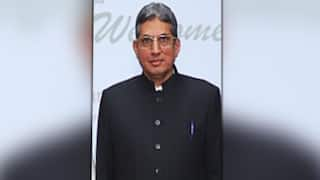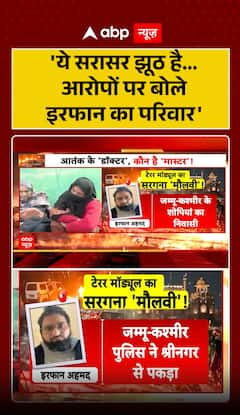Reveries of One’s Childhood: A Brief Eulogy for Soumitra Chatterjee
As is perhaps true of many of our country’s greatest figures in the art, cultural, and intellectual spheres of life, particularly those who have not surrendered entirely to the prerogatives that come with being part of the Anglophone world, Chatterjee—Soumitrada to his fellow Bengalis—had a reputation as a Renaissance-like figure that outstripped the name he had made for himself in the rest of India as a Bengali movie actor.

When Soumitra Chatterjee passed away on November 15, I felt, quite likely in common with many others in India and especially West Bengal who had followed his career, or who had at least more than a passing familiarity with the cinematic oeuvre of Satyajit Ray, as though some part of my own childhood had been yanked from me. Soumitrada came to fame as the young man Apu who, in the third part of Ray’s trilogy, Apur Sansar (“The World of Apu”), has abandoned the village and the life of a family priest for the thrills and hazards of life in the big city: Calcutta. It is said that Ray had wanted to cast him as Apu in the second part of the trilogy, Aparajito, but he was too old for the part of the young Apu. Yet, such was the spell cast by Soumitra Chatterjee, it seems as if even the child and adolescent Apu were played by him. The trilogy closes out Apu’s life, but so many lives of the young were set in motion with Apu’s life. Soumitra Chatterjee, one felt, had been Apu throughout; and Apu’s life became one’s own.
As is perhaps true of many of our country’s greatest figures in the art, cultural, and intellectual spheres of life, particularly those who have not surrendered entirely to the prerogatives that come with being part of the Anglophone world, Chatterjee—Soumitrada to his fellow Bengalis—had a reputation as a Renaissance-like figure that outstripped the name he had made for himself in the rest of India as a Bengali movie actor. He was, of course, far from being unknown outside Bengal, and one accolade followed another, among them the Padma Bhushan (2004) and the Dadasaheb Phalke Award (2012) for lifetime contribution sans pareil to the growth and development of Indian cinema. The French have long prided themselves on being connoisseurs of the best of global culture and the award of the Legion of Honour (2018) was perhaps par for the course. In Calcutta, however, Chatterjee was a larger-than-life figure with a domineering presence in the theatre scene as an actor, director, and playwright. His comedy, Ghatak Bidey, reportedly ran for 500 nights. He was also an extremely accomplished poet and essayist, with over 30 books to his name, and a painter to boot. And, lest we forget (as if we could), Chatterjee appeared in 300 films and worked with nearly every major Bengali filmmaker, among them Tapan Sinha, Mrinal Sen, Rituparno Ghosh, and Aparna Sen.
Nevertheless, as Chatterjee himself confessed, and as the world came to know, his name would henceforth be indelibly linked with that of Satyajit Ray once he had made his debut in Apur Sansar (1959). Chatterjee would go on to act in fourteen of Ray’s films, demonstrating an altogether enviable versatility. In Abhijan (“The Expedition”, 1962), he appears as the hot-headed taxi driver Narsingh of Rajput lineage: if in the American Western the hero would much rather take the horse than the woman as he rides off into the wilderness, Narsingh has little use for women and showers all his attention on his 1930 Chrysler. The cynical cabbie Travis Bickle (played by Robert De Niro) in Martin Scorsese’s Taxi Driver (1976) would be modeled after Narsingh. Chatterjee would play a role cast in opposite terms as the idealistic doctor Gangacharan in Ray’s Ashani Sanket (“Distant Thunder”, 1976), which is set against the devastating Bengal famine of 1943. And then there is Charulata (“The Lonely Wife”, 1964), the film that some afficionados of Ray place above all his other films. Here Chatterjee plays Amal, a young handsome man who enters the household of his older cousin Bhupati and finds that he shares with Bhupati’s lonely wife, Charu, interests in literature and music. The frailty of tender yet forbidden intimacy was never better expressed.
 Apu (Soumitra Chatterjee) teaches Aparna (Sharmila Tagore) how to read; a scene from Apur Sansar (1959).
Apu (Soumitra Chatterjee) teaches Aparna (Sharmila Tagore) how to read; a scene from Apur Sansar (1959).
Yet, when all is said and done, Apur Sansar can reasonably be viewed as the greatest milestone in Chatterjee’s career. Akira Kurosawa, one of the other great scions of world cinema and Ray’s contemporary, wrote of Ray that “the quiet but deep observation, understanding and love of the human race, which are characteristic of all his films, have impressed me greatly. … Not to have seen the cinema of Ray means existing in the world without seeing the sun or the moon.” He would go on to describe the excitement he felt after he first saw Pather Panchali (“Song of the Road”, 1955). But Kurosawa would doubtless also have had in mind the second and third parts of what would become, though it was never conceived as such—a trilogy. Where Pather Panchali practically ends with the death of Apu’s sister, Durga, and their father’s decision to abandon his ancestral home in the village, Aparajito (“The Unvanquished”, 1956), closes with the death of Apu’s mother and his decision to return to Calcutta and sit for his school exams.
Soumitra Chatterjee would come in as Apu in Apur Sansar—as, to read from the testimonial presented in English in the opening scene, Apurba Kumar Ray, a student in the “Intermediate Science class in the City College, Calcutta. He is sensitive, conscientious and diligent, and is deserving of the fullest sympathy and encouragement.” This is scarcely the place to describe the plot and narrative structure of the film, and suffice to say that the lonely Apu, who has barely broached a word with a girl, suddenly finds himself married to a young woman under the most unusual circumstances. Much of Ray’s early work in particular has been described as “pure cinema”, but “visual poetry” is a more apt way of rendering the matchless union of motion and stillness, and the juxtaposition of seemingly disparate elements that taken together produce a narrative that exceeds what may be put forward by a piece of dialogue, that lie at the heart of Ray’s cinematic genius. The married life of Apu and Aparna (played by Sharmila Tagore) is encompassed in a few scenes, all rendered with breathtaking simplicity, elegance, and subtlety. The censorship code would not have permitted the explicit expression of sexual intercourse, or even a touch of nudity; Ray, in any case, would not have had the slightest interest in showing overt love-making. Aparna wakes up in the morning; Apu is lying by her side. She gets up but as she starts to move away from the bed she finds that the end of her sari is knotted to the kurta; gently swatting him for his naughtiness, she undoes the knot; meanwhile, Apu opens his eyes and finds her hair-pin by the pillow. More than enough has been said to convey the physical union of the lovers.
Who can say whether some other actor would have able to render the scene with the same exquisite command that Soumitra Chatterjee brought to it—and indeed to the entire film? Here he was called upon to exhibit playfulness, the feeling of immense content that some derive from domesticity and a happily married life, and the sense of gaiety of an inexhaustible joie de vivre. But mortals were not built for too much happiness and too much happiness in any case cannot make for good cinema. Aparna dies in childbirth but their son survives. However, mortified by his wife’s death, Apu abandons his son, Kajal—only to reclaim him some years later. Kajal receives him with hostility; slowly this turns into studied indifference; but slowly, if imperceptibly, he begins to warm up to his father. Apu, fearing all is lost, prepares to leave; as he walks away from the house, Kajal follows him at a distance. There can be few greater scenes in cinema than the closing shot of Apur Sansar: all at once, Kajal rushes into his father’s arms; and at one fell swoop, Apu embraces him and perches him on his shoulder and they walk down the road. It is Pather Panchali, the inaugural film of the trilogy, that is known in English as “Song of the Road”; it is, in a different register, Pather Panchali all over again. So Soumitra Chatterjee, the Apu of Apur Sansar, was always there from the outset. To see Soumitra Chatterjee as Apu is to want to live one’s life all over again.
(Vinay Lal is a writer, blogger, cultural critic, and Professor of History at UCLA)
Disclaimer: The opinions, beliefs and views expressed by the various authors and forum participants on this website are personal and do not reflect the opinions, beliefs and views of ABP News Network Pvt Ltd.


























